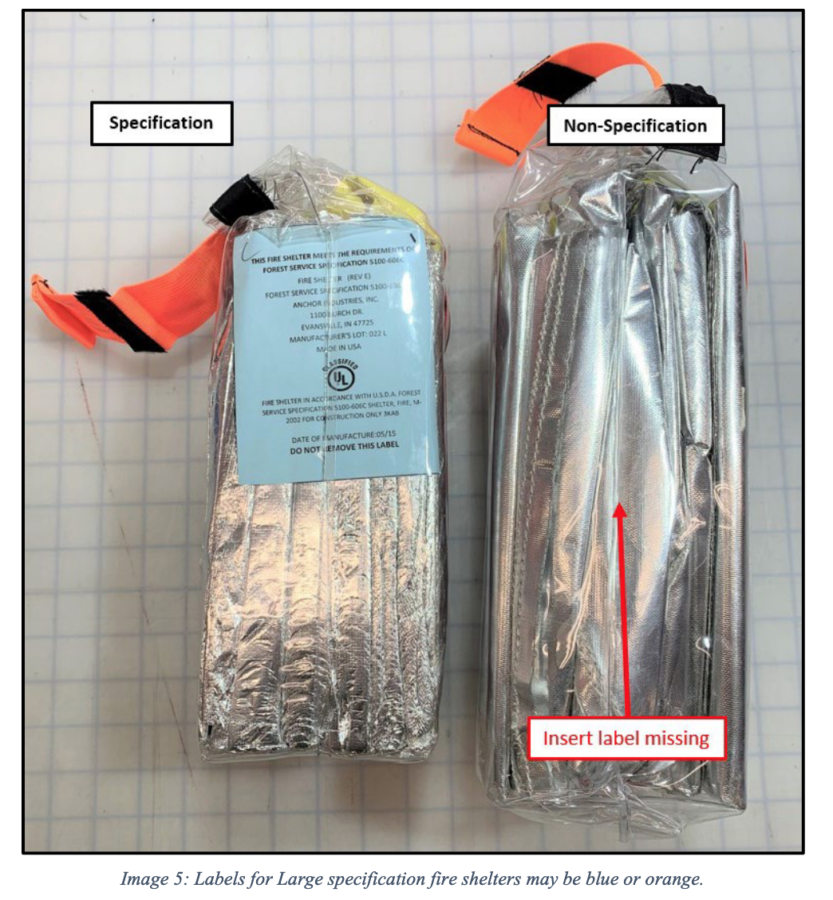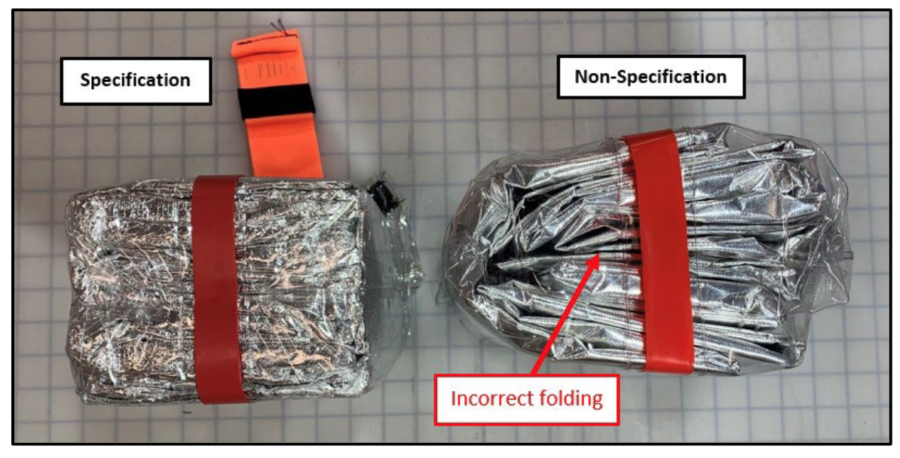Greg Greenhoe posted this today on facebook. Shared with permission:
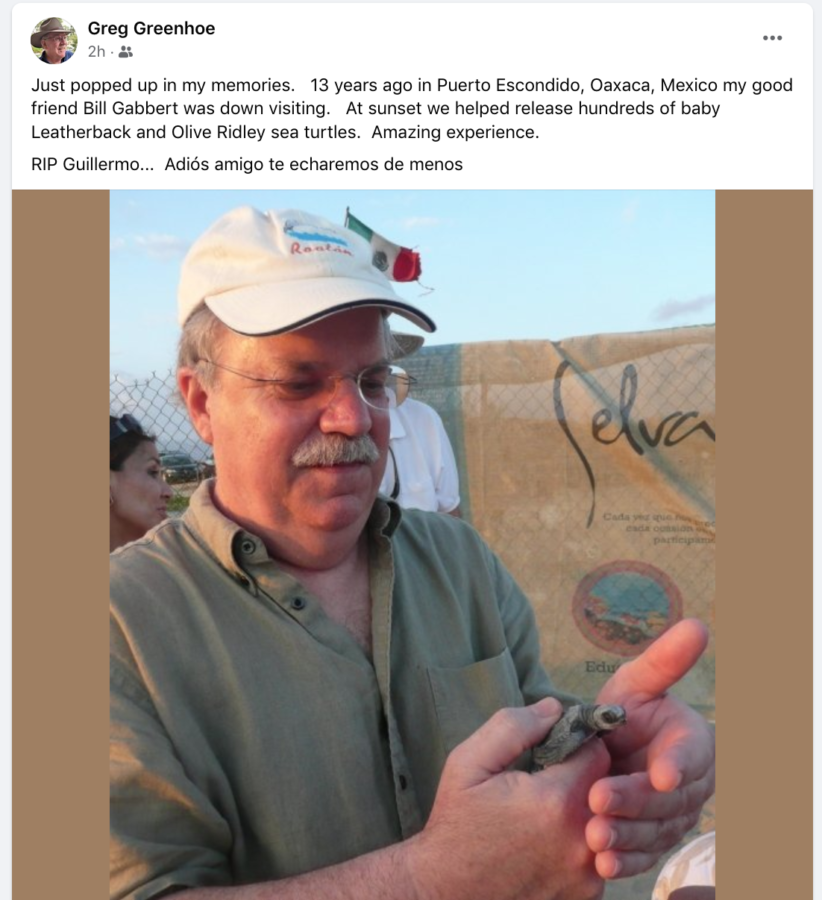
News and opinion about wildland fire
Greg Greenhoe posted this today on facebook. Shared with permission:

A North Carolina fire has spread across several thousand acres and had reached about 34 percent containment by late Sunday afternoon.
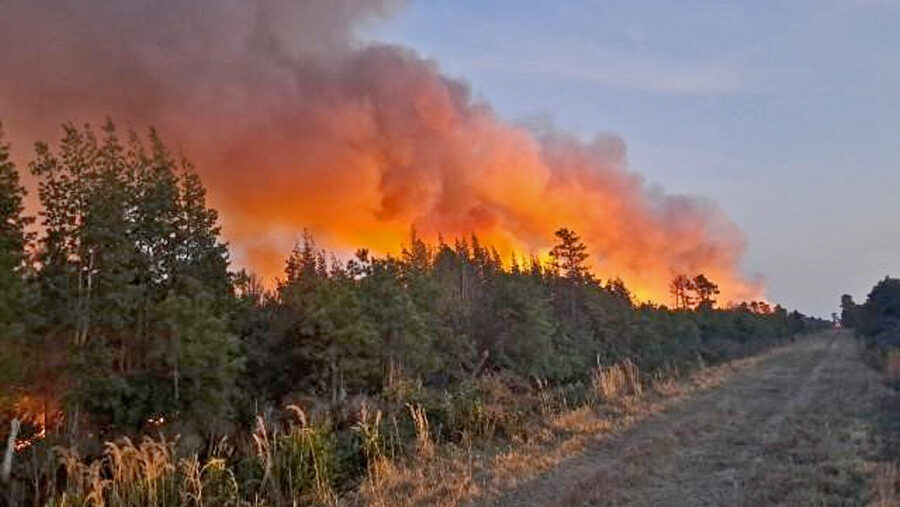
The News & Observer reported that the Last Resort Fire is burning on both private and federal lands in rural Tyrrell County. After firing operations on Saturday, the fire was estimated at 5,800 acres. That was revised downward late Sunday.

The North Carolina Forest Service said the fire’s burning near Columbia, just south of the Albemarle Sound. Joint command has been established with the U.S. Fish and Wildlife Service.

Light rain moderated conditions late yesterday, and crews are working on containment lines. Fire managers cautioned that smoke may impair driving conditions in the area; about 75 firefighters from both the state and U.S. Fish and Wildlife were assigned. A Type 3 IMT took over management Sunday.
13NewsNow reported that the fire may cause smoky conditions on the Outer Banks and was producing heavy drifting smoke to the east of the fire.
03/27/ update: People from as far north as Washington D.C. are complaining of smoke smell.
Secretary of the Interior Deb Haaland announced on Sunday more than $21 million in new funding for wildfire risk reduction; she spoke during a press conference with Senator Jeff Merkley at the Oregon Department of Forestry Southwest District headquarters, according to a report by KEZI-TV News in Eugene, Oregon.
She said fire management agencies plan fuel management work on more than 170,000 acres in Oregon this year.
District Forester Mike Shaw said there’s good news with better snowpack this year. “I do project that we’re going to have another challenging fire season,” he said. “All hands on deck is the approach that we’re taking and all wildland fire agencies are working together.”
Senator Jeff Merkley, chairman of the Subcommittee on Interior, Environment, and Related Agencies, joined Haaland and Shaw to emphasize their collaboration on wildfire prevention. “We’re really focusing on the front end of forest treatment and on the back end of having the resources to fight the fires,” Merkley said. “The key word here is collaboration.”
Aside from the millions in federal funding allotted from his bipartisan infrastructure law, Haaland said that President Biden is also supporting increased pay, better housing, and more full-time jobs for firefighters.
Vice President Kamala Harris joined other national leaders in the nation’s capitol to announce the new funding to help protect high-risk communities. “Our acres of burned land have doubled,” Harris said. “We need to change how we think about how we respond to fires. We need to prevent them, not just respond after they’ve started.”
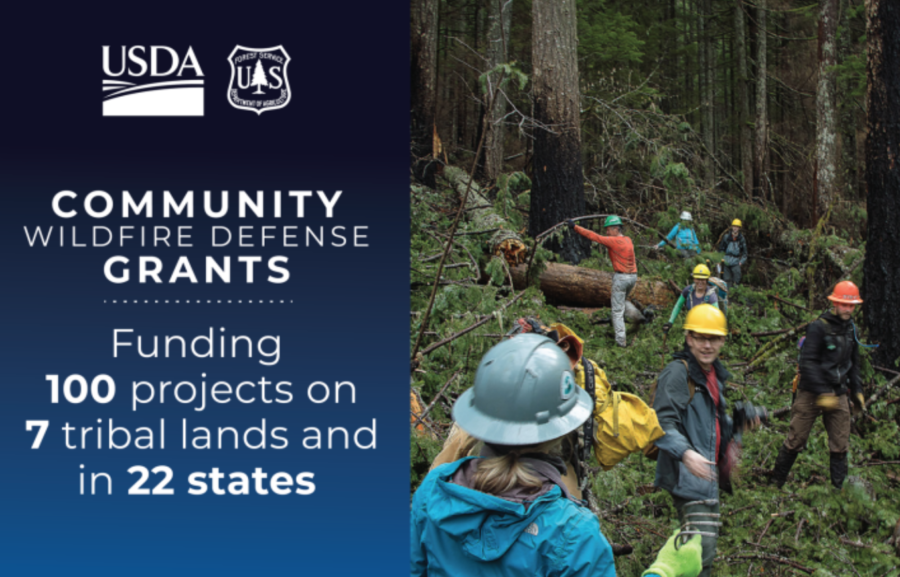
KRDO News reported that $197 million in federal funding will be made available this year to 100 communities in 22 states and 7 Native American tribes. “There were 36 states and 45 tribes that applied for the funding,” Harris said. “This is the result of legislation I started years ago while I was in the Senate.”
She said she was motivated by recent destructive fires in her home state of California. “This will be the first of many grants,” she said. “We’re committing $1 billion over the next four years and $7 billion over the next ten years.”
A 7-acre wildfire in the area of Highway 14 and Arrowhead, according to a report by 9NEWS-TV, resulted in evacuations for residents of Poudre Canyon in Larimer County on Sunday afternoon.
Voluntary evacuations were issued for a stretch of the canyon; the Arrowhead Fire was reported by the Canyon Lakes Ranger District at 50 percent containment by late afternoon.
The Coloradoan reported that the fire was burning near the U.S. Forest Service’s Arrowhead Lodge visitor center, 34 miles west of Ted’s Place along Colorado Highway 14, also known as the Poudre Canyon Highway. The sheriff’s office issued evacuation notices from the Lodge east to Riverside Drive, and residents were told to gather essential items and prepare to evacuate. A Red Cross evacuation site was established at Cache La Poudre Middle School in Laporte, and a portion of Highway 14 was closed between Arrowhead Lodge and Rustic.
Federal wildland fire funding may increase by nearly 25 percent in 2024 if President Biden’s budget priorities are adopted by Congress. The budget, released March 9, reflects firefighters’ concerns and a rising political commitment to face increasingly complex wildfire conditions.
Initiatives include a long-term fix for wildland firefighter pay equity, an 8 percent increase in the number of federal and Tribal firefighters, and expansion of prior commitments to interagency response and research, fuels management, aviation and remote sensing initiatives, and community-based prevention programs.
T he summary fact sheet released by the Office of Management and Budget has a single mention of wildfires, woven into a $24 billion investment to “build communities’ resilience to floods, wildfires, storms, extreme heat, and drought brought on by climate change.”
he summary fact sheet released by the Office of Management and Budget has a single mention of wildfires, woven into a $24 billion investment to “build communities’ resilience to floods, wildfires, storms, extreme heat, and drought brought on by climate change.”
Wildfire and wildland fire management funding in the 2024 budget appear in joint and specific releases by the lead agencies with federal wildland fire management responsibilities. The U.S. Department of Agriculture proposes a 28 percent increase and the Department of the Interior proposes a 21 percent increase over 2023 funding.
News releases from both departments note the priority for funding the proposed raises in base pay for federal and tribal firefighters. The budget summary notes that funding will pay for fuels as well as fire management. The proposal calls for “More than $4.2 billion for the U.S. Departments of Agriculture and the Interior wildland fire and hazardous fuels management” that will “implement comprehensive workforce reform, including increased firefighter pay, additional firefighting capacity, enhanced mental and physical health support, and improved housing options for firefighters.”
As detailed in a March 9 USDA release, “The budget includes increases of $180 million for USDA and $72 million for DOI to raise base pay for Federal and Tribal wildland firefighters, with additional premium pay costs covered out of funding requested for suppression operations.” The USFS Explanatory Notes page for the 2024 budget includes additional details and annual performance indicators. One indicator of note for 2022: on page 233, it’s reported that nearly 3 million acres of fuels treatments were accomplished, with 57 percent using prescribed fire despite a prescribed fire pause (followed by the release of the National Prescribed Fire Program Review) put in place after prescribed fire escapes in New Mexico. The 2024 budget increases hazardous fuels targets to 4 million acres.
The DOI release expands on the appropriations request: “The President’s 2024 Budget proposes legislation and funding to implement significant reforms to increase the Nation’s investment in the wildland fire management workforce. The cornerstone of these long-term reforms is a permanent increase in pay. The Administration proposes legislation to establish a special base rate salary table for wildland firefighters, create a new premium pay category that provides some additional compensation for all hours a wildland fire responder is mobilized on an incident, and establish a streamlined pay cap that provides waiver authority to the Secretary using specific criteria.”
The pay-raise focus has garnered support from the National Federation of Federal Employees. In a March 13 release, NFFE President Randy Erwin praises President Biden for “taking this critical step in addressing the wildfire crisis and improving the lives of federal wildland firefighters across the country.”
Erwin noted that pay reforms will “help recruit and retain skilled personnel … While there is still much work to do to ensure our wildland firefighting workforce has the resources to be sustainable in the coming years, I am proud that our members are seeing results from their advocacy.”
Approval of the budget faces the challenge of a divided Congress. A Republican-majority House may push back against the overall budget, resulting in a flat-lined continuing resolution in place of an approved 2024 budget. Additionally, implementation may be shaped by legislation that may result from reports and recommendations of the Wildland Fire Mitigation and Management Commission. The commission’s final call for recommendations from the public (including firefighters) closes on March 22.
Fire shelters that are not manufactured to specs are being advertised and sold as meeting Forest Service (FS) specification 5100-606 requirements. These shelters are made from unknown materials and components that have not been tested and certified, and the materials could affect the performance and safety of the non-specification fire shelter if deployed on a fire.
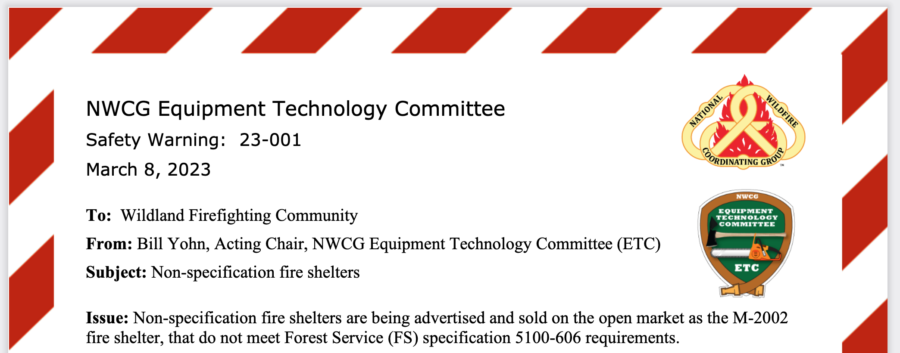
These shelters are sold as the M-2002 fire shelter. The National Technology and Development Program (NTDP) was alerted on February 22, 2023 about these fire shelters by a contractor who inspected their shelters upon delivery.
Subject matter experts with NTDP evaluated the shelters and determined they did not meet FS specifications that govern the materials and components deemed safe for fire shelter use. Specification fire shelter materials have been extensively tested for toxicity; they do not release toxicants that would harm a shelter occupant. Shelters constructed with materials that don’t meet requirements have not been tested and may release hazardous toxicants to a shelter occupant. NTDP has not yet completed testing of the thermal performance of these non-specification fire shelters, but a visual inspection shows deviations that will mean the shelter does not deploy as intended. Any non-FedMall (open market) fire shelter purchases should be inspected to verify that they are built to specification 5100-606.
Any non-specification fire shelter should be removed from service and NOT CARRIED ON THE FIRELINE. IN THE EVENT OF AN ENTRAPMENT OR BURNOVER, SERIOUS INJURY OR DEATH COULD OCCUR.
The noticeable differences between specification and the non-specification fire shelters can be identified by the following.
> Carry case:
• Absence of hard plastic liner
• Missing stenciling on Use Instructions pocket
• Missing sewn-in label
> Polyvinyl chloride (PVC) bag:
• For the Large fire shelter, the pull strap is missing LARGE stenciling (FYI the pull strap for Regular fire shelters is yellow and not labeled)
• Missing paper insert label
> Fire shelter:
• Missing LEFT HAND and RIGHT HAND stenciling on shake handles
• Uneven and loose folding of the shelter not in a brick shape
The non-specification fire shelters are made from unknown materials and components that do NOT meet specification 5100-606. Use of the non-specification fire shelter during an entrapment or burnover may result in serious injury or death. For federal agencies, the Interagency Standards for Fire and Aviation Operations (Red Book), Chapter 7: Safety and Risk Management specifies that firefighters must carry an M-2002 fire shelter built to FS specification 5100-606 while on the fireline.
Questions? Please contact:
David Maclay-Schulte, Equipment Specialist
david.j.maclay-schulte@usda.gov 406-329-3965
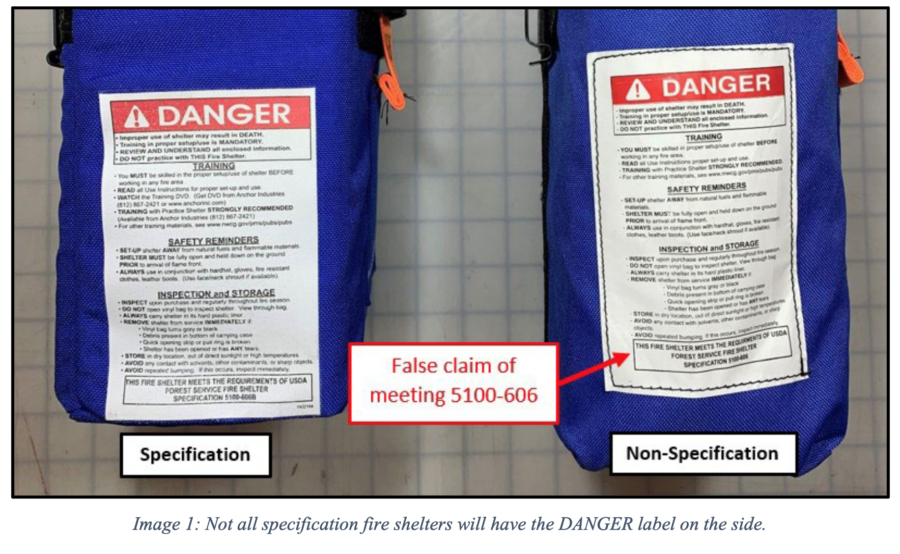
All federal firefighters should purchase shelters directly from FedMall. State and local government firefighters may be able to register for FedMall access through the State and Local Government Purchasing Program. Those purchasing outside of FedMall should ensure they purchase fire shelters from reputable suppliers.
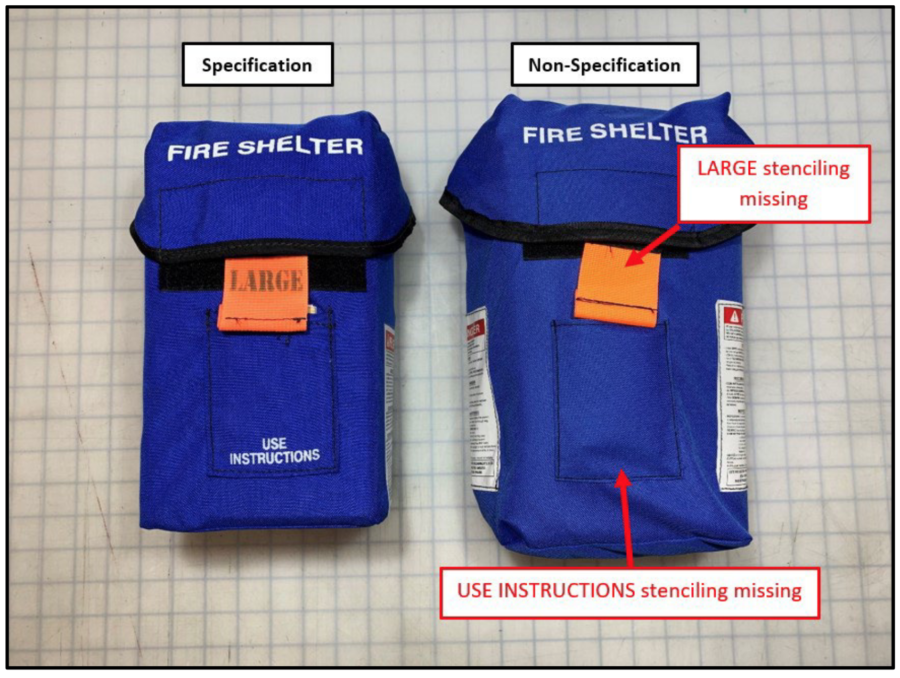
The fire shelters identified in this Safety Warning are the only known non-specification fire shelters currently sold on the open market, but that does not mean there aren’t others.
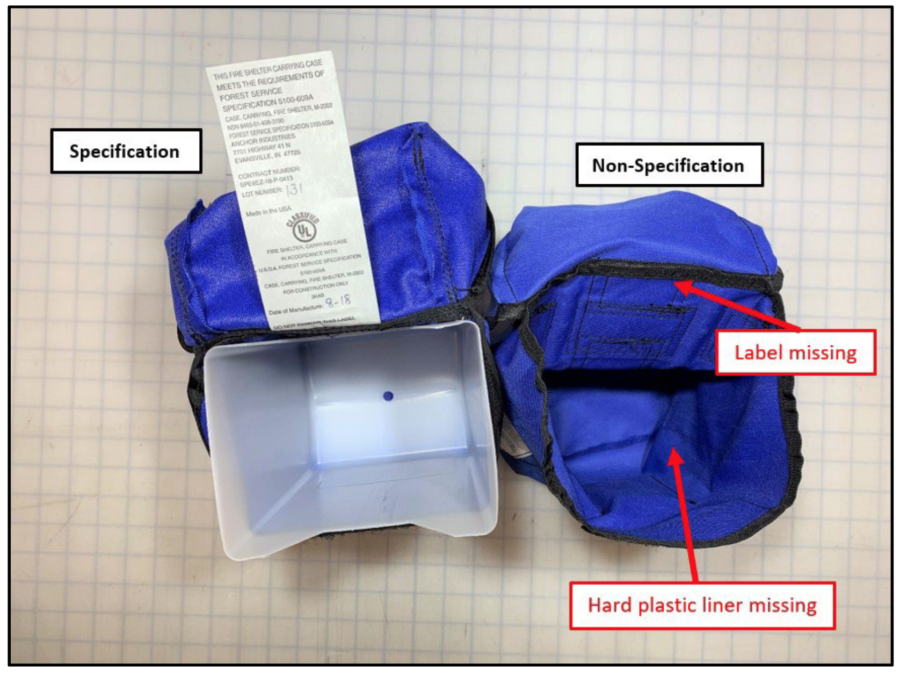
All fire shelters, regardless of supplier, should be inspected upon receipt to ensure that all components are accounted for, the shelter meets specification requirements, and that no damage has occurred during shipping or storage. Contact NTDP if you suspect you have purchased or stored a non-specification fire shelter.
Additional information on shelters is posted on the Fire Shelter and Personal Protective Equipment Subcommittee website.
